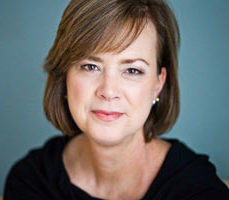
Sara Marberry

It’s taken a global pandemic to make the world realize the impact the design of the physical environment has on human health and well-being.
But it’s something we’ve been talking about in healthcare design for the past 30-plus years.
Design’s effect on health and well-being was one of the main reasons Wayne Ruga started the Symposium on Healthcare Design in 1988 and a group of us later founded the nonprofit Center for Health Design in 1993.
It was part of the principles of Planetree, which began in 1978 and a focus of the Society for the Advancement of Gerontological Environments (SAGE) when it was founded in 1994. Health Care Without Harm has been challenging us to think about the building’s impact on the environment and human health since 1996.
Buildings as Front-Line Caregivers
Now, the International WELL Building Institute (IWBI) is leading the conversation about healthy buildings, urging those planning and designing any type of building to think about it as the first line of defense in the fight against the virus that causes Covid-19.
In other words, buildings as front-line caregivers.
This idea was suggested by Joseph G. Allen, D.Sc., MPH in an IBWI webcast I listened to recently. As Assistant Professor of Exposure and Assessment Science and Director of the Healthy Buildings program at the Harvard T.H. Chan School of Public Health, Dr. Allen is like the Anthony Fauci of healthy buildings.
But buildings as front-line caregivers is not a new idea to healthcare.
Providing safe environments for patients/residents and staff has been part of the design conversation for years. And there’s a lot of research about things like infection control, indoor air quality, and slips/falls that links patient/resident and staff outcomes to design.
Now that Covid-19 has happened, perhaps more healthcare leaders and senior living providers will understand how important design really is. And start to embrace and advocate for WELL Building Certification.
The time is right for this in all buildings, but especially hospitals, clinics, medical offices, residential care facilities, and senior living communities.
Safe Workplaces
I also heard a fascinating webinar last week by ergonomics expert Alan Hedge,
Ph.D., CPE, C.ErgHF, FIEHF, FHFES, FIEA, about what we have to do to prepare workplace environments so they are safe for employees to return to work. Dr. Hedge is professor Emeritus, Design + Environmental Analysis, College of Human Ecology at Cornell University and a consultant to Humanscale.
While his remarks were tailored to office workplaces, I think a lot of what he said would be good for healthcare workplaces as well. Some key takeaways:
- Manage thresholds: use sanitizing walk-off mats, require employees to change footwear before they enter the workplace.
- Manage routes: use visual cues to indicate social distancing, directional traffic patterns, use touch-free systems for elevators and doors in high traffic areas.
- Manage cleaning: clean and disinfect all surfaces (including office chairs), use UV light devices to clean floors.
One other idea Dr. Hedge suggested that I really love is to use UV desk lamps that employees can turn on when they leave the office to disinfect their desktop. He cautioned, though, that you’d only want to use a product like this when people aren’t present, because UV light is harmful to humans.
One More Thing
If you missed my free webinar, “In the Wake of Covid-19: What’s Next for Healthcare Planning and Design,” it’s now posted on my website. Check it out!
This column originally ran on Sara Marberry’s blog on May 15. Marberry is a healthcare design expert who has written/edited five books and is a regular contributor to Healthcare Design magazine. Marberry also is a former Executive Vice President of the nonprofit Center for Health Design.
